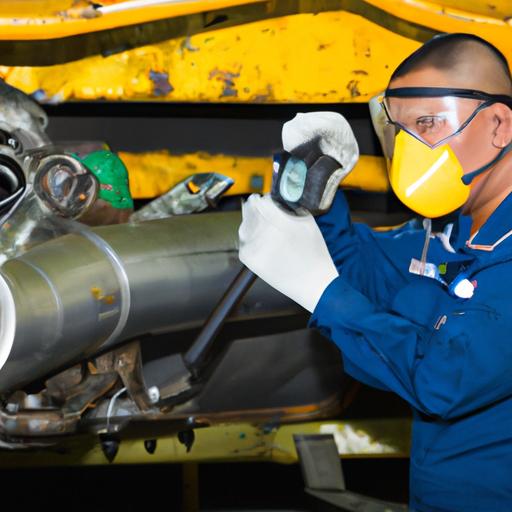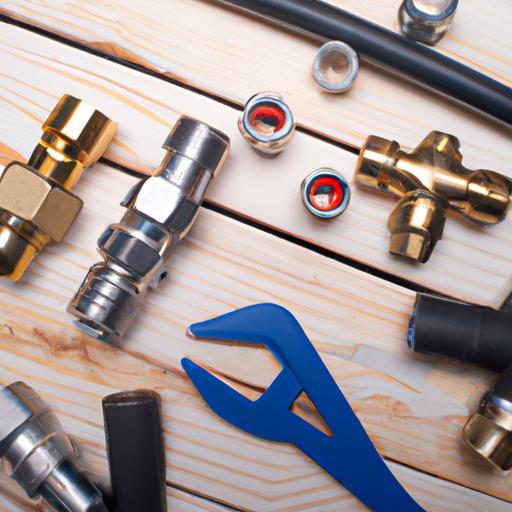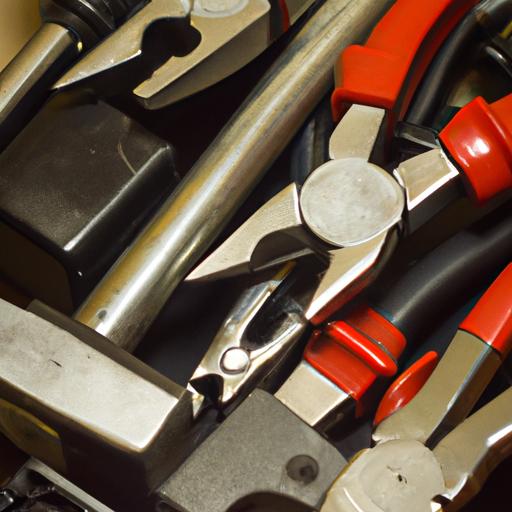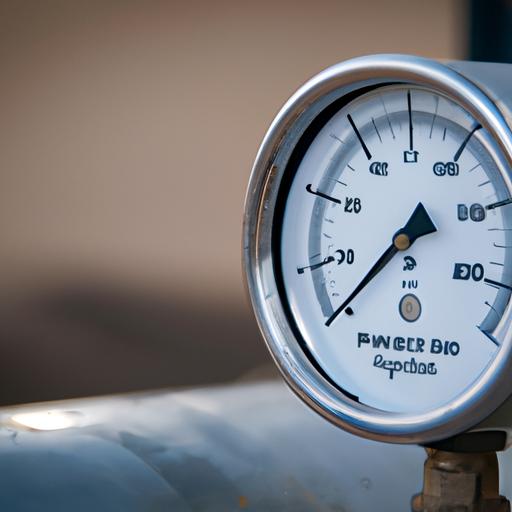The engine room is the heart of any vessel, ensuring its smooth operation and performance. However, this critical area can be rife with potential hazards and risks. That’s why it’s crucial to take proper precautions when working in the engine room, especially when using measuring tools. In this article, we will explore the importance of these precautions and the significance of using measuring tools in engine room maintenance and repair.
A. Importance of Precautions While Working in the Engine Room
Working in the engine room requires a high level of awareness and caution. The engine room is a complex and dynamic environment, with heavy machinery, high temperatures, and various substances that can pose serious threats to safety. By taking necessary precautions, we can mitigate these risks and ensure the well-being of ourselves and our colleagues.
B. Significance of Using Measuring Tools in Engine Room Maintenance and Repair
Measuring tools play a vital role in the maintenance and repair of engines. These tools enable accurate measurements of various parameters such as pressure, temperature, and vibration levels. By using measuring tools correctly, engineers can identify potential issues, monitor performance, and make informed decisions regarding engine maintenance and repair. This ensures optimal engine efficiency, reduces downtime, and enhances the overall safety and reliability of the vessel.
In the following sections, we will delve deeper into the engine room environment, explore essential measuring tools, discuss precautions specific to working in the engine room, and highlight the importance of using measuring tools correctly. So, let’s embark on this journey towards a safer and more efficient engine room operation.
Understanding the Engine Room Environment
A. Overview of Engine Room Layout and Functions
The engine room is a complex and intricate space where various machinery and systems work harmoniously to ensure the vessel’s propulsion and power generation. It houses engines, generators, pumps, compressors, and numerous other vital components. Understanding the layout and functions of the engine room is crucial for anyone working in this environment.
The engine room typically consists of different sections, including the main propulsion area, auxiliary machinery space, control room, and fuel storage area. Each section serves a specific purpose, contributing to the overall operation of the vessel. Familiarizing yourself with the layout and functions of these areas will enable you to navigate the engine room efficiently and carry out your tasks effectively.
B. Potential Hazards and Risks Associated with Working in the Engine Room
Working in the engine room exposes individuals to various hazards and risks. The presence of heavy machinery, moving parts, high temperatures, confined spaces, and the potential for exposure to hazardous substances create an environment that demands utmost caution. Some common risks include slips, trips, and falls, electrical hazards, fire and explosion risks, chemical exposure, and machinery-related accidents.
It is vital to be aware of these potential hazards and take appropriate precautions to mitigate the associated risks. This includes wearing personal protective equipment (PPE) such as safety helmets, gloves, goggles, and hearing protection, as well as following safety procedures and guidelines.
C. Importance of Safety Protocols and Precautions
Safety protocols and precautions are the cornerstone of a secure engine room environment. Adhering to established safety protocols ensures the well-being of everyone on board and minimizes the occurrence of accidents. Regular safety training, hazard identification, risk assessments, and emergency drills are essential components of maintaining a safe engine room.
By following safety protocols, you contribute to a culture of safety and create a working environment where everyone can perform their duties confidently and without unnecessary risks. Remember, safety is a shared responsibility, and each individual has a role to play in maintaining a secure engine room environment.
Essential Measuring Tools for Engine Room Work
A. Overview of Commonly Used Measuring Tools in the Engine Room
In the engine room, a wide array of measuring tools are utilized to ensure accurate assessments and precise adjustments. These tools enable engineers to monitor critical parameters and identify potential issues before they escalate into major problems. Some commonly used measuring tools in the engine room include:
-
Pressure Gauges: These instruments provide readings of fluid pressure in various systems, such as fuel, lubrication, and cooling systems. They help detect abnormal pressure levels, allowing for timely adjustments and preventive measures.
-
Temperature Sensors: Engine temperature is a crucial factor in ensuring optimal performance and preventing overheating. Temperature sensors, such as thermocouples or infrared thermometers, enable engineers to measure and monitor temperature levels accurately.
-
Vibration Analyzers: Vibrations can indicate mechanical issues within the engine, such as misalignments or worn-out components. Vibration analyzers capture and analyze vibrations, helping engineers pinpoint the root cause of problems and take appropriate corrective actions.
B. Importance of Accurate Measurements in Maintaining Engine Performance
Accurate measurements are essential for maintaining engine performance at its peak. Engine components have precise specifications and tolerances, and any deviations can result in decreased efficiency, increased fuel consumption, or even catastrophic failures. By using measuring tools to obtain accurate readings, engineers can assess the condition of various engine parameters and make necessary adjustments to optimize performance.
Furthermore, accurate measurements provide valuable data for preventive maintenance. By monitoring trends over time, engineers can detect early signs of wear, identify potential issues, and plan maintenance activities proactively. This proactive approach helps minimize unexpected downtime and costly repairs, ensuring the engine operates reliably and efficiently.
C. Proper Handling and Maintenance of Measuring Tools
To ensure the accuracy and longevity of measuring tools, proper handling and maintenance are crucial. Here are some important considerations:
-
Calibration: Regular calibration of measuring tools is essential to maintain their accuracy. Follow manufacturer recommendations or industry standards to calibrate the tools at specified intervals.
-
Storage: Store measuring tools in a clean and dry environment, away from extreme temperatures and corrosive substances. Proper storage helps prevent damage and extends the lifespan of the tools.
-
Handling: Handle measuring tools with care, avoiding dropping or mishandling. Treat delicate instruments, such as thermometers or gauges, gently to prevent damage to sensitive components.
By adhering to these practices, engineers can ensure the reliability and accuracy of measuring tools, enhancing their effectiveness in engine room maintenance and repair tasks.
In the next section, we will discuss the precautions that should be taken while working in the engine room, focusing on personal protective equipment (PPE) requirements and the importance of proper training and certification.
Precautions for Working in the Engine Room
When it comes to working in the engine room, safety should be the utmost priority. By following proper precautions, we can significantly reduce the risk of accidents and ensure a secure working environment. Let’s explore some essential precautions that should be taken into consideration:
A. Personal Protective Equipment (PPE) Requirements
Wearing the appropriate personal protective equipment (PPE) is crucial for safeguarding oneself in the engine room. This includes items such as safety goggles, protective gloves, safety boots, and ear protection. PPE acts as a barrier against potential hazards, such as flying debris, chemicals, excessive noise, and electrical shocks. Always ensure that you are equipped with the necessary PPE before entering the engine room.
B. Proper Training and Certification for Engine Room Work
Working in the engine room requires specialized knowledge and skills. It is essential to undergo proper training and certification to understand the intricacies of the machinery, safety procedures, and emergency protocols. Training programs not only familiarize individuals with the equipment but also educate them about potential risks and teach them how to respond in critical situations. By staying updated with the latest industry practices, one can effectively contribute to a safer engine room environment.
C. Importance of Teamwork and Communication in the Engine Room
The engine room is a collaborative workspace, where effective teamwork and communication are pivotal. Working together and communicating clearly with colleagues can help identify and mitigate potential risks. Regular safety briefings, clear instructions, and open lines of communication ensure that everyone is on the same page and can respond promptly in case of emergencies. Remember, safety is a collective responsibility.
D. Understanding Emergency Procedures and Protocols
In the event of an emergency, every second counts. It is crucial to familiarize oneself with emergency procedures and protocols specific to the engine room. This includes knowing the location of emergency exits, fire extinguishers, and emergency shutdowns. Regular drills and training sessions can help individuals respond quickly and efficiently during critical situations, minimizing the impact and ensuring the safety of all personnel on board.
By adhering to these precautions, we can create a safer working environment in the engine room. Remember, safety is not just an individual responsibility but a collective effort towards protecting ourselves and our fellow crew members. Let’s continue to prioritize safety and maintain a culture of vigilance in the engine room.
Precautions Specific to Using Measuring Tools
Accurate measurements are crucial in engine room maintenance and repair. To ensure precise readings and avoid potential mishaps, it is essential to take specific precautions when using measuring tools. Let’s explore some key measures to consider:
A. Proper Tool Selection for Specific Tasks
Selecting the right measuring tool for a particular task is paramount. Different tools are designed for specific measurements, such as pressure gauges, thermometers, or tachometers. Using the appropriate tool ensures accurate readings and reduces the risk of errors or inaccuracies. Familiarize yourself with the various measuring tools available and their specific applications to make informed choices.
B. Ensuring Tools Are Calibrated and in Good Working Condition
Regular calibration of measuring tools is vital to maintain their accuracy. Over time, tools may experience wear and tear or drift from their original calibration. It is crucial to follow a calibration schedule and ensure that measuring tools are calibrated at the recommended intervals. Additionally, inspect tools before each use to ensure they are in good working condition, with no damage or defects that could affect their accuracy.
C. Safe Handling and Storage of Measuring Tools
Proper handling and storage of measuring tools contribute to their longevity and accuracy. Avoid dropping or mishandling tools, as this can lead to damage or misalignment. After use, clean tools appropriately and store them in designated areas to protect them from dust, moisture, or other environmental factors that could compromise their functionality.
D. Avoiding Common Mistakes and Errors While Using Measuring Tools
Even with the right tools and proper handling, certain mistakes can still occur during measurement. To minimize errors, ensure you are using the measuring tool correctly and following the manufacturer’s guidelines. Pay attention to factors such as zeroing the tool, positioning it correctly, and taking multiple readings for consistency. By being mindful of these potential pitfalls, you can enhance the accuracy and reliability of your measurements.
By adhering to these precautions, you can ensure the integrity of your measurements and contribute to a safer and more efficient engine room operation. Let’s move on to the next section, where we will explore additional precautions for working in the engine room.
Conclusion
In conclusion, when it comes to working in the engine room and using measuring tools, taking necessary precautions is of utmost importance. By prioritizing safety and adhering to proper protocols, we can minimize the risks associated with this dynamic environment.
Throughout this article, we have emphasized the significance of precautions while working in the engine room and highlighted the importance of using measuring tools correctly. By following safety guidelines, wearing appropriate personal protective equipment, and receiving proper training, we can ensure a safer working environment for everyone involved.
Remember, the engine room is the powerhouse of a vessel, and its maintenance and repair require accurate measurements and careful attention. By using measuring tools correctly, we can identify potential issues, monitor performance, and make informed decisions that contribute to the overall efficiency and reliability of the engine.
So, whether you are an experienced engineer or someone new to the engine room, always prioritize safety and take the necessary precautions. By doing so, you not only protect yourself but also contribute to the smooth operation of the vessel and the well-being of your crewmates.
In the ever-evolving world of maritime operations, it is essential to stay updated with the latest safety guidelines and best practices. By continuously learning and improving our skills, we can ensure a safer and more efficient engine room environment.
Let’s work together to create a culture of safety and excellence in engine room operations. Stay vigilant, stay safe, and remember the importance of precautions while working in the engine room using measuring tools.



